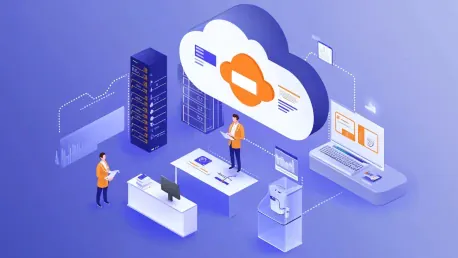The convergence of artificial intelligence (AI) and cloud computing is driving significant advancements in the healthcare and dental care industries. As these technologies continue to evolve, they are not merely improving healthcare delivery through technical enhancements but are also paving the way for a more patient-centered approach. This transformation is characterized by innovations in predictive analytics, patient personalization, and operational efficiencies, promising better health outcomes, broader accessibility, and superior patient experiences.
Predictive Analytics: Proactive Health and Dental Care
Revolutionizing Early Detection and Risk Mitigation
Predictive analytics harnessing AI and cloud platforms has revolutionized healthcare and dental care by allowing providers to identify and mitigate risks before they manifest into critical issues. By analyzing extensive datasets through machine learning (ML) algorithms, companies can detect patterns, trends, and anomalies, facilitating early disease detection, resource allocation, and public health management.
Wearable devices like Fitbit and Apple Watch capture continuous health metrics such as heart rate and activity levels. When integrated with cloud-based AI systems, they can alert users and healthcare providers to early warning signs of conditions like atrial fibrillation. Similarly, AI-powered imaging tools in dentistry, such as Pearl and Denti.AI, analyze X-ray data to forecast the onset of oral diseases, including cavities, gum disease, and oral cancer, enabling dentists to intervene early. This early intervention is crucial for preventing minor issues from becoming major health problems, thus improving overall patient outcomes and reducing healthcare costs.
Impact During the COVID-19 Pandemic
During the COVID-19 pandemic, AI-driven predictive models hosted on cloud platforms played an instrumental role. They analyzed data from various sources to forecast infection surges, aiding in effective resource deployment, such as ventilators and ICU beds. These models helped healthcare systems prepare and respond more effectively to fluctuating demands, potentially saving countless lives. Dental clinics, meanwhile, utilized AI tools to predict patient volumes, assisting in appointment scheduling and maintaining operational continuity. This not only minimized the risk of viral transmission by avoiding overcrowding but also ensured that urgent dental needs were addressed promptly.
The integration of predictive analytics in healthcare and dental care showcases how technology can transform reactive systems into proactive ones. By forecasting potential health issues and resource needs, these systems allow for better planning and quicker response times, thereby enhancing the overall quality of care. As technology continues to evolve, the capabilities of predictive analytics are expected to expand, providing even more precise and comprehensive insights for healthcare providers.
Patient Personalization: Tailored Treatments in Medicine and Dentistry
Advancements in Personalized Medical Treatments
The ability to tailor medical and dental treatments to individual patients has been significantly advanced by AI and cloud technologies. By analyzing genetic, environmental, and lifestyle data, these technologies enable the design of personalized treatment plans, enhancing outcomes and minimizing adverse reactions.
AI-driven genomics, using cloud infrastructure, can quickly process large volumes of genetic data. Companies like Illumina offer insights into a patient’s genetic susceptibility to diseases like diabetes or cancer. AI algorithms can recommend preventive measures or targeted therapies, such as specific cancer immunotherapies that are tailored to the genetic makeup of an individual’s tumor. This kind of personalized medicine not only improves the effectiveness of treatments but also reduces the likelihood of adverse drug reactions, leading to better overall patient outcomes.
Personalized Dental Care Innovations
In dental care, personalized treatment planning has seen notable progress. AI-powered tools like Invisalign’s ClinCheck system analyze dental scans to create precise aligners, speeding up the orthodontic process. These tools utilize cloud-based platforms to provide real-time access to 3D scans and treatment models, ensuring dental prosthetics like crowns and bridges are tailored to individual oral structures. This precision helps in achieving better-fitting prosthetics, thereby improving the comfort and effectiveness of dental treatments.
Additionally, AI and cloud-based personalization extend to wearable tech and mobile apps. Applications like MyFitnessPal and Omada Health offer tailored fitness and nutrition plans. In dentistry, AI-enabled toothbrushes from Oral-B and Colgate Connect provide personalized brushing recommendations, enhancing oral hygiene based on data from smart sensors. These devices monitor brushing habits and provide feedback to help users improve their dental health routines, potentially reducing the risk of dental diseases.
The advancements in personalized treatments driven by AI and cloud technologies mark a significant shift toward more patient-centric care. By tailoring treatments to the unique needs of each patient, healthcare providers can deliver more effective and efficient care, improving patient satisfaction and health outcomes.
Operational Efficiency: Streamlining Health and Dental Systems
Optimizing Patient Flow and Resource Allocation
Enhancing the efficiency of healthcare and dental systems is crucial for delivering quality care amid rising populations and limited resources. AI and cloud technologies support providers in optimizing operations, reducing costs, and improving service delivery.
Hospitals and dental clinics are increasingly leveraging AI tools to optimize patient flow. Cloud-based platforms can forecast patient admission and discharge rates, helping administrators better allocate resources such as beds, staff, and equipment. Machine learning tools like LeanTaaS iQueue improve operating room scheduling, reducing wait times and increasing utilization. By predicting patient flow patterns, these tools help reduce bottlenecks in the system, ensuring smooth and efficient operations.
Integration of Electronic Health Records (EHRs)
Electronic health records (EHRs) are becoming more integrated and less cumbersome with AI and cloud computing. Platforms like Epic and Cerner centralize data storage, making it accessible across different departments and facilities. This integration allows for seamless sharing of patient information, reducing the need for duplicate tests and improving coordination of care. Cloud-based dental practice management software integrates AI to streamline patient records, billing, and appointment scheduling, enabling more efficient management of dental practices.
Transforming Supply Chain Management
Supply chain management in healthcare and dental care is also being transformed. AI-driven cloud platforms predicted shortages of critical supplies during the COVID-19 pandemic, enabling better management of inventory. These platforms analyze supply chain data to forecast demand, ensuring that essential items are stocked and available when needed. In dentistry, similar technologies help clinics maintain necessary stock levels of disposable items, ensuring continuous patient care. By preventing supply shortages, these technologies help maintain the smooth operation of healthcare facilities.
Overarching Trends and Consensus Viewpoints
Transition from Reactive to Proactive Care
The conjunction of AI and cloud technologies is facilitating a transition from reactive to proactive healthcare and dental care. Predictive analytics allow the early detection of diseases and efficient resource allocation, while patient personalization leads to more customized treatment plans. Operational efficiency is being improved through optimized patient flow and better supply chain management. This shift from reactive to proactive care means that healthcare systems can intervene earlier and more effectively, improving patient outcomes and reducing overall healthcare costs.
Common Goals and Unified Understanding
While predictive analytics, patient personalization, and operational efficiency represent distinct aspects of the AI-cloud synergy in healthcare and dental care, they share common goals of enhancing outcomes, accessibility, and efficiency. By synthesizing the details and minimizing repetitive information, these points can be summarized as follows: Predictive analytics utilizes vast data analysis to forecast health and dental issues, enabling early detection and intervention. Patient personalization leverages genetic and lifestyle data to tailor treatments, improving patient-specific outcomes and reducing adverse reactions. Operational efficiency optimizes hospital and clinic operations through better resource allocation, improved patient flow, and enhanced inventory management.
Conclusion
The intersection of artificial intelligence (AI) and cloud computing is driving major advancements in both healthcare and dental care sectors. As these technologies advance, they are not just enhancing healthcare delivery through technical upgrades, but also fostering a more patient-focused approach. This ongoing transformation is characterized by developments in predictive analytics, personalized patient care, and increased operational efficiency. Ultimately, these innovations are resulting in better health outcomes, improved accessibility to care, and richer patient experiences.
AI and cloud computing are revolutionizing the way patient data is gathered, analyzed, and used to predict potential health issues. Predictive analytics allows for early detection of conditions, giving healthcare providers the ability to intervene sooner and offer treatments before issues become severe. Personalized patient care, on the other hand, ensures that treatments and interventions are tailored to individual needs, ultimately improving their effectiveness.
Operational efficiencies brought on by these technologies also lead to streamlined processes in both healthcare and dental practices. This means reduced waiting times, more accurate diagnoses, and better overall management of patient care. With these advancements, the healthcare industry is poised to offer more accessible, affordable, and higher-quality care, ensuring better outcomes and enhanced patient experiences.









